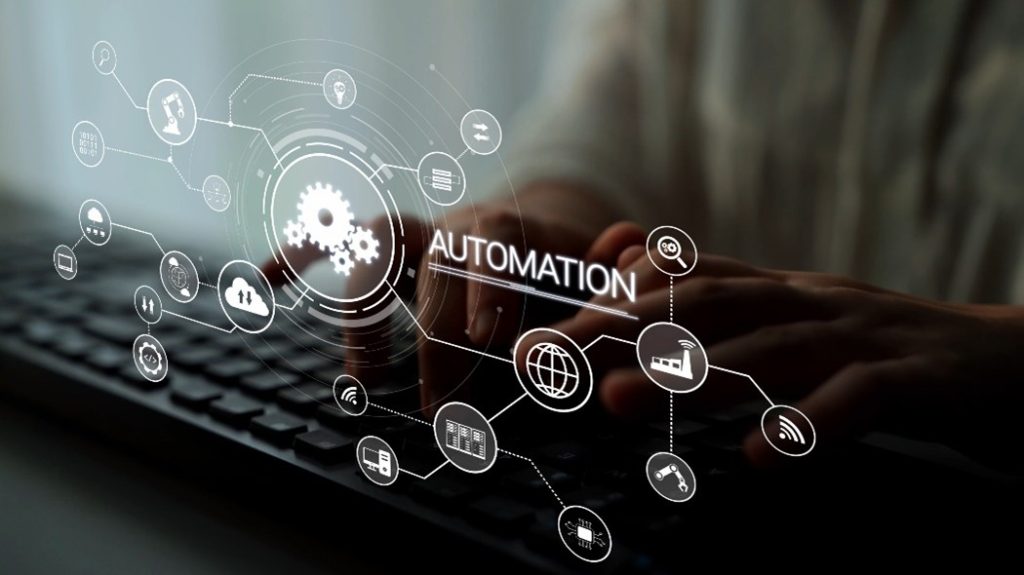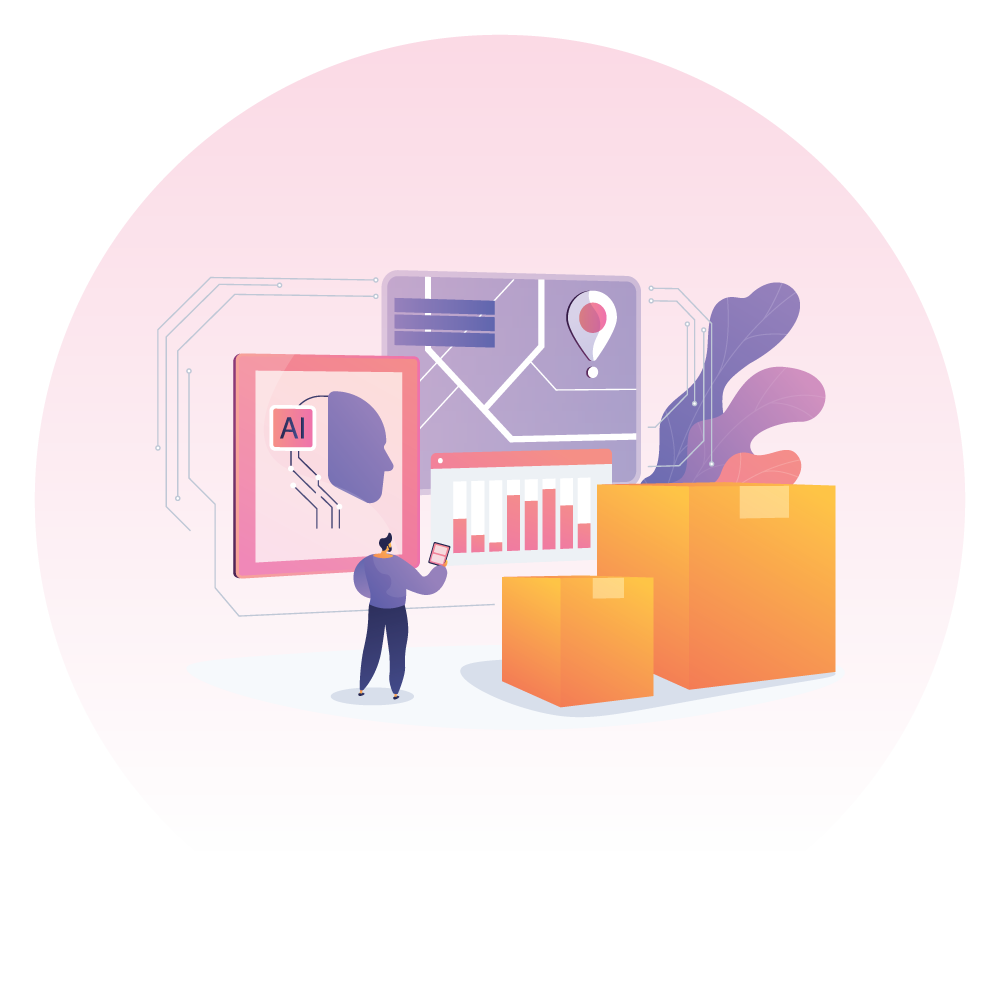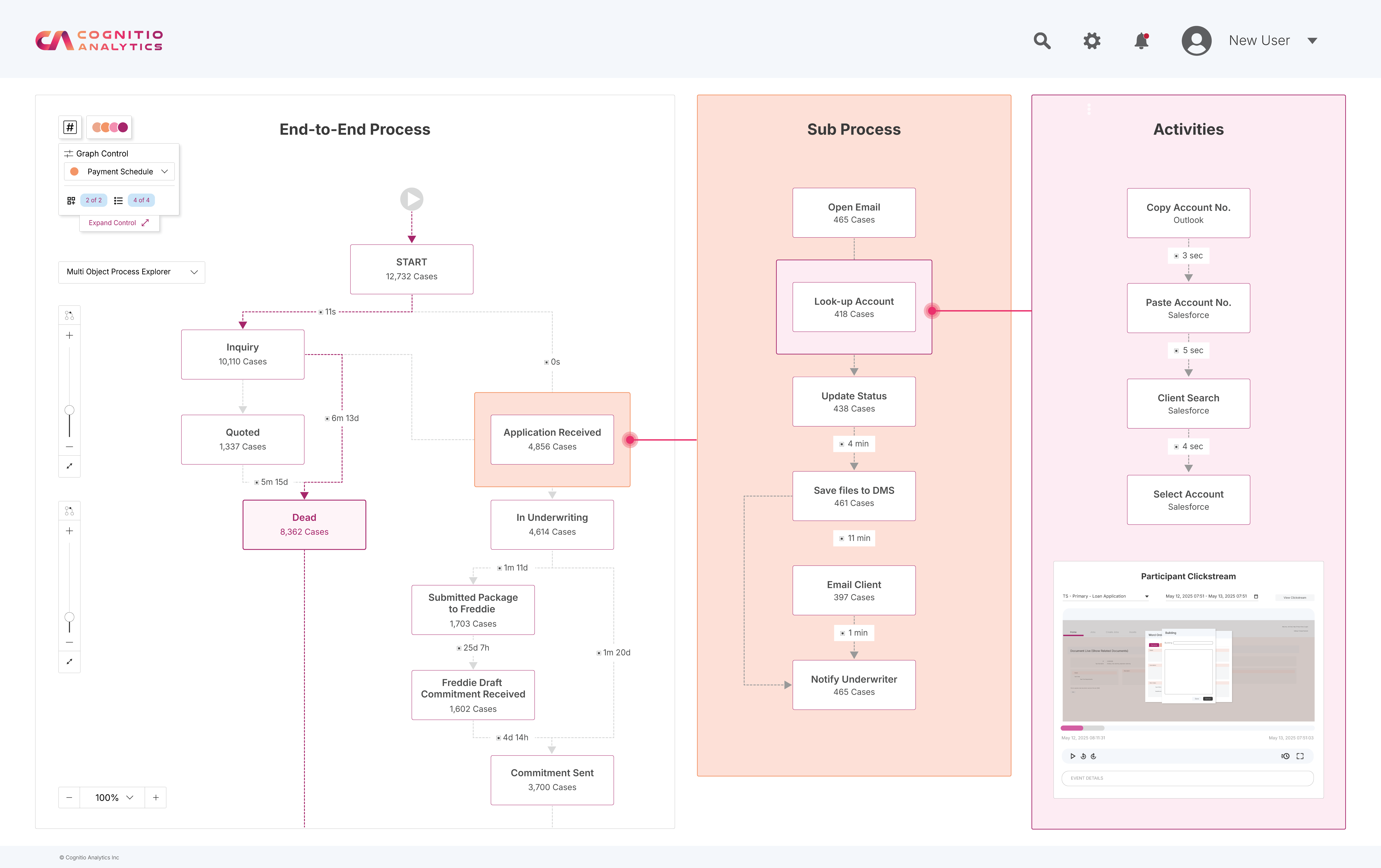
Process Intelligence: The Engine for Intelligent Automation
- Published Date: September 4, 2025
In our previous articles, we explored the foundational power of process intelligence, from understanding the holistic view with process mining to uncovering granular details with task mining. But what happens after you’ve mapped the “as-is” state of your operations and pinpointed every inefficiency? The next step is transformation, and the engine that powers it is intelligent automation.
Process intelligence isn’t just about analysis; it’s the critical first step in a data-driven automation journey. The insights you gain are the fuel that feeds and directs your automation strategy, ensuring that you’re not just automating a broken process, but building a smarter, more efficient future.
From Insights to Action: The Blueprint for Automation
Before you can automate, you must understand. The detailed process maps from process mining and the micro-level user activity data from task mining provide the essential blueprint for intelligent automation.
- Process Mining for Automation Strategy: By analyzing end-to-end workflows, process mining reveals where the biggest bottlenecks and longest cycle times exist. This helps leadership prioritize automation efforts with the highest potential return on investment. It answers the question, “Which processes should we automate?”
- Task Mining for Automation Design: Once a high-value process is identified, task mining zooms in to uncover the exact steps that are repetitive, rule-based, or error-prone. This micro-level insight is crucial for building a precise and effective automation solution. It provides the “how-to” guide for a robot or an intelligent agent.
This powerful combination of macro and micro insights, often referred to as mining for automation, ensures that every automation initiative is targeted, validated, and designed for maximum impact.
Unlock the Power of Process Intelligence – Integrated Approach
Don’t just look at part of the picture.
With process mining, task mining, and process intelligence combined, you get the complete view—from end-to-end flows to granular desktop-level insights.
This integrated lens ensures your automation strategy is built on fact, not assumption.
RPA, GenAI, and Agentic AI: Understanding the Stack
The landscape of automation is evolving rapidly. While the term intelligent automation is broad, it’s helpful to distinguish between its core technologies:
- Robotic Process Automation (RPA): The foundation of automation. RPA bots are best at automating structured, rule-based, and repetitive tasks that involve interacting with user interfaces (like clicking buttons or entering data into forms). Think of an RPA bot as a digital employee that follows a rigid script. It’s the “doer.”
- Generative AI (GenAI): This technology focuses on creating new content, be it text, images, or code, in response to a prompt. GenAI is a reactive tool, a powerful engine for content creation, but it lacks the ability to set and pursue its own goals. It’s the “creator.”
- Agentic AI: The next frontier of automation. Agentic AI systems are goal-oriented, proactive, and can reason, plan, and execute multi-step tasks autonomously. An Agentic AI can leverage other tools, like a GenAI model to write an email or an RPA bot to enter data, to achieve its objective. It’s the “strategist” and “orchestrator” of the operation.
Process intelligence provides the data needed to fuel and train all three. It identifies opportunities for RPA, supplies the data to fine-tune GenAI models, and, most importantly, provides the contextual understanding that allows Agentic AI to operate autonomously.

From Insights to Intelligent Automation – Be Automation Ready
Ready to go beyond analysis?
Our methodology helps you move from discovery to execution—fueling RPA, GenAI, and Agentic AI initiatives with the high-fidelity process data they need to succeed.
Don’t just automate. Automate smart.
High-Impact Use Cases: Process Intelligence Driving Agentic AI
The convergence of process intelligence and Agentic AI is no longer a futuristic concept; it’s a reality driving significant transformation in large enterprises. Here are a few high-impact use cases:
- Autonomous Customer Service: A major telecommunications company used process and task mining to discover that a significant number of calls were triggered by proactive service disruptions (e.g., planned maintenance). Instead of just fielding calls, their Agentic AI system now monitors service quality in real-time, proactively identifies a service drop for a customer, and autonomously initiates a resolution. It runs diagnostics, applies a service credit to the account, and sends a personalized, proactive notification to the customer, all without human intervention. The system learns from each interaction, improving its diagnostic capabilities over time.
- Dynamic Supply Chain Logistics: A global manufacturing and logistics firm used process intelligence to identify vulnerabilities in its supply chain. They deployed a network of Agentic AI systems that monitor real-time data from various sources (weather patterns, traffic, geopolitical events, supplier inventory). When a critical shipping route is disrupted, the agents autonomously identify the issue, assess alternative routes, and even negotiate new contracts with carriers, all while updating stakeholders with revised delivery estimates.
- Financial Services Risk & Compliance: A large financial institution utilized process mining to map complex financial workflows. They then deployed Agentic AI to automate compliance checks. The agent can monitor millions of transactions for anomalies, assess creditworthiness in real-time, and flag potential risks. It autonomously gathers information from multiple systems, reasons about the context, and creates an audit-ready report for human review, dramatically reducing manual review cycles and ensuring proactive risk management.
- Healthcare Patient Care Coordination: A healthcare system used process intelligence to map patient journeys from admission to discharge. They deployed an Agentic AI system to coordinate care plans, monitor patient vitals, send medication reminders to patients, and alert staff to potential risks. This autonomous system frees up clinical staff from manual, administrative tasks, allowing them to focus on high-value, empathetic patient care, all while ensuring a more reliable and efficient care model.
At Cognitio Analytics, we specialize in helping our clients navigate this complex landscape. By providing the right tools and methodology, we empower you to choose the optimal path for your organization and transform your operational data into a strategic advantage. It’s how we turn intelligent automation from a buzzword into a reality.
Explore the Latest
Discover trends and strategies shaping smarter, faster business processes.




